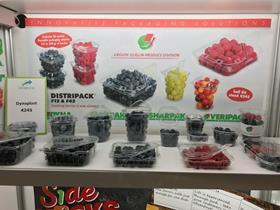
In October I attended PMA Fresh Summit 2018 in Orlando, Florida, one of the largest global gatherings of the fresh produce industry with a focus on where our industry is headed. There were too many ideas to share in just 500-words, so I have managed to pull out my key insights from the event; a technology, a trend and an idea that will give you snapshot of where we are headed.
The advances of technology in the field of vertical farming are taking it from an idea to a real and important part of industry. As people sprawl outwards from city centres, taking up traditional farming land, it seems our food production has but one way to go – up. There are now turnkey options available for designs ranging from compact, portable systems – often in a shipping container format – right through to permanent football-field-sized greenhouses. This is not a single technology, but rather a system of technologies working in a new way – automation and robotics, lighting, climate control and water cycling – all of which is mounting to fully automated vertical production systems. Advances in technology, including automation, have signalled that vertical farming is here to stay.
Given the focus on packaging in the Australian and New Zealand markets, the team at PMA A-NZ were keen to explore trends and ideas from a North American perspective. The key trend we noted from packaging suppliers at Fresh Summit was a greater emphasis on the recyclability of the product. With very few pulp and fibre alternatives on show, plastic clam shells and produce bags were common-place. This was not what we expected, due to the negative attitudes towards plastic globally and the highly emotive consumer demand for sustainable packaging we are seeing in our domestic market. The move towards recycling in the US, rather than more sustainably-viewed alternatives, seemed to be primarily driven by cost. It will be interesting to see how this unfolds in the coming years, both in the US and globally.
The key idea I saw being capitalised on at Fresh Summit was that of digitising data and the supply chain. Blockchain and big data have been key discussion topics for supply chains for a while now, but I was surprised to learn how many commercial applications there are for managing data in the fresh produce supply chain. There were a range of ready-to-go platforms on offer that promised to revolutionise our data collection, management and use. Digital platforms now have the capability to automatically collect and record data at multiple stages along the supply chain and spatially map this data for multiple production sites. The concept of entire-chain traceability seems closer than ever. However, with the multitude of commercial platforms available, the challenge for industry will be working out which one to engage with. There is a demand for transparency from some parts of the supply chain (and consumers) but there are also plenty of businesses that are questioning just how much information they want to share and with whom.



